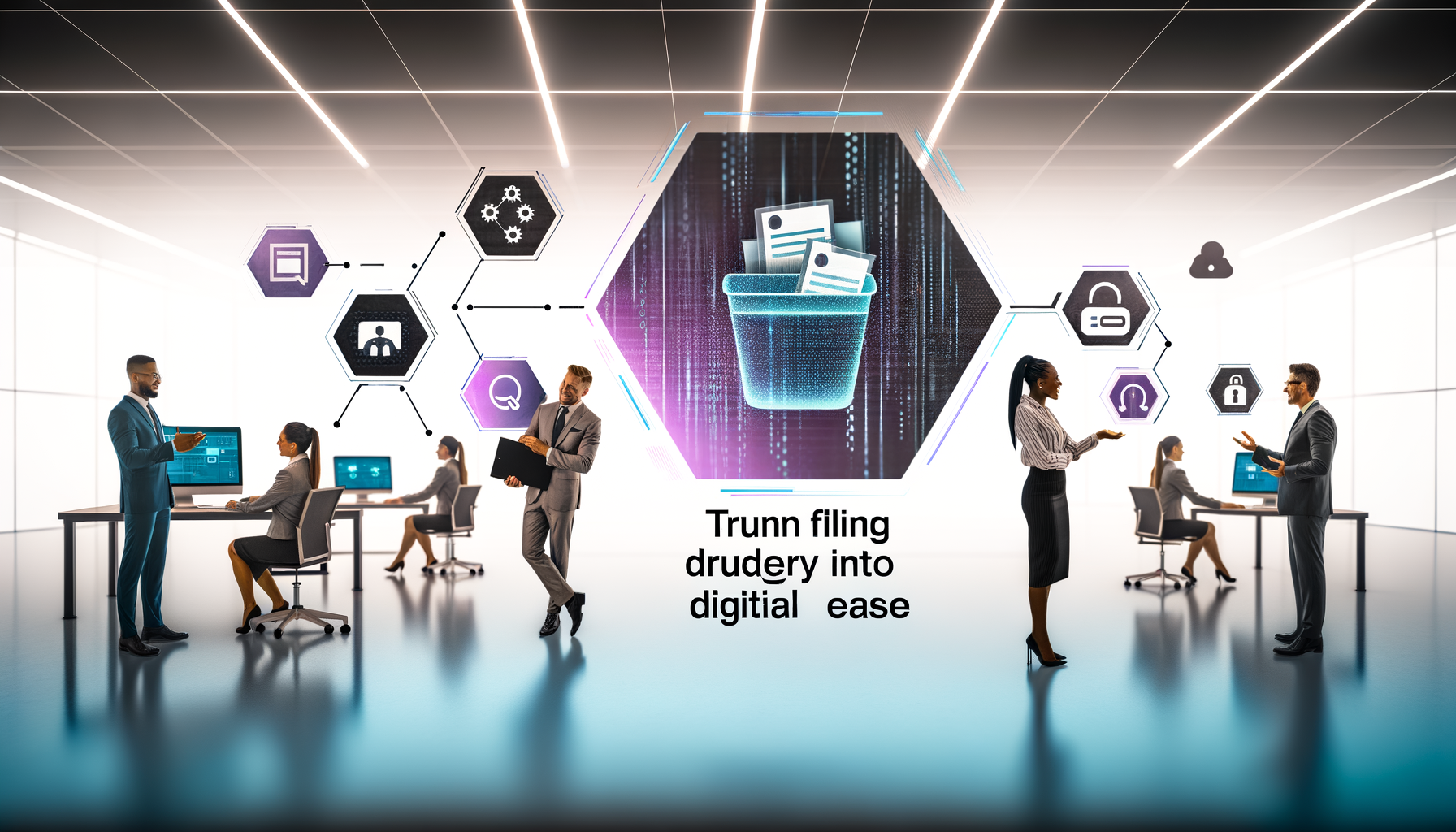- Digital Transformation
- August 27, 2024
Transitioning from Paper to Digital Records in Law Firms

The shift from paper to digital constitutes one of the most profound transitions a law firm can undergo in today’s tech-driven world. Gone are the days when rows of filing cabinets occupied prime office space, filled with stacks of paper records that were both tedious to manage and vulnerable to damage. Today, digital records offer a streamlined, efficient, and secure alternative. With the right approach, this transition not only enhances productivity but also ensures that law firms remain competitive and compliant in an evolving legal landscape.
Understanding the Shift from Paper to Digital
Transitioning from paper to digital is not just a technological upgrade; it’s a strategic revolution. Law firms, known for their reliance on extensive documentation, are now recognizing the myriad benefits of going digital. It’s more than storing records digitally—it’s about transforming how information is accessed, shared, and secured.
For those beginning this journey, it’s essential to understand the multifaceted advantages awaiting them. First and foremost, transitioning provides instant access to information, breaking down the time-consuming barriers of manual search and retrieval. Moreover, digital records are pivotal in enhancing data security, offering encryption and controlled access that paper cannot.
Why Law Firms Must Embrace Digital Transformation
The legal industry, traditionally associated with reams of paperwork, is on the cusp of a digital transformation that can’t be ignored. The driving forces behind this transition from paper to digital include:
Steps to Transition from Paper to Digital
Successfully transitioning to digital is a cycle that involves several essential steps. Here’s how law firms can approach it:
1. Planning and Setting Objectives
Begin with a clear plan. Identify which documents and records are critical, assess the expected volume of data, and decide the digital formats that suit your firm’s needs. Determine your primary objectives for digitization, such as improved accessibility, enhanced security, or cost reduction.
2. Investing in the Right Technology
Choose technology that aligns with your firm’s goals. This may involve investing in a robust Document Management System (DMS) that supports secure storage and retrieval of digital files. Consider AI-driven solutions like RecordsKeeper.AI, which automates categorization, ensures secure sharing, and offers compliance management features.
3. Preparing for Digitization
Organize existing paper records. Prioritize them by relevance and necessity to streamline the digitization process. This preparation is crucial to avoid overwhelming the system with unnecessary or redundant documents.
4. Migrating and Digitizing Data
Start with high-priority files. Scanning and converting documents into digital formats must be done methodically to ensure accuracy. Tag and classify records for easy retrieval and consider using optical character recognition (OCR) to convert scanned files into searchable data.
5. Implementing Security Measures
Digital data, while generally more secure, requires its own set of protections. Implement strong encryption, set user access controls, and establish an ongoing data backup routine. With RecordsKeeper.AI, you can ensure your records are backed up and immutable, with blockchain technology providing a level of security traditional methods can’t match.
6. Staff Training and Policy Implementation
The human element is vital in any transition. Conduct training sessions to familiarize staff with digital tools and processes. Educate them on new policies surrounding data protection and accessibility, ensuring everyone is on board with the transition.
7. Continuous Monitoring and Feedback
After the initial transition, continuously monitor the system performance. Solicit feedback from staff to improve and adapt the digital practices. Regular audits and updates are essential to maintain compliance and efficiency.
The Strategic Advantages of Embracing Digital
While adopting digital records may initially seem daunting, the long-term benefits far outweigh the challenges. Digital information management grants law firms a competitive edge, enabling them to pivot swiftly in dynamic legal environments. What’s more, clients today expect their legal representatives to safeguard confidential information, a challenge that digital solutions address more adeptly than paper ever could.
In summary, transitioning from paper to digital represents a significant step forward for any law firm. The journey might require an initial investment of time and resources, yet the rewards—efficiency, security, compliance, and a reduced environmental footprint—establish this as a critical move for the modern era.
As a proponent of digital transformation and the power of emerging technologies, I encourage law firms to explore platforms like RecordsKeeper.AI, not just as a tool, but as a partner in crafting a future where record management becomes a strategic advantage rather than an obligation. Follow me for more insights and let’s innovate how we handle records, together.
Toshendra Sharma is the visionary founder and CEO of RecordsKeeper.AI, spearheading the fusion of AI and blockchain to redefine enterprise record management. With a groundbreaking approach to solving complex business challenges, Toshendra combines deep expertise in blockchain and artificial intelligence with an acute understanding of enterprise compliance and security needs.
Related Posts

Transform Manual Tasks into Digital Ease Using RecordsKeeper.AI
How AI automates manual documentation tasks.
- November 16, 2024

Turn Filing Drudgery into Digital Ease With RecordsKeeper.AI
How AI transforms manual filing into digital efficiency.
- November 16, 2024
Archives
- January 2025
- December 2024
- November 2024
- October 2024
- September 2024
- August 2024
- July 2024
- June 2024
- May 2024
- April 2024
- March 2024
- February 2024
- January 2024
- December 2023
- November 2023
- October 2023
- September 2023
- August 2023
- July 2023
- June 2023
- May 2023
- April 2023
- March 2023
- February 2023
- January 2023
- December 2022
- November 2022
- October 2022
- September 2022
Want to get more content like this?
Signup to directly get this type of content to your inbox!!
Latest Post
Document Control for Equipment Maintenance
- January 20, 2025
Managing Records for Multiple Clients
- January 19, 2025
Handling Conference Documentation
- January 18, 2025
Setting Up Department Record Reviews
- January 17, 2025





